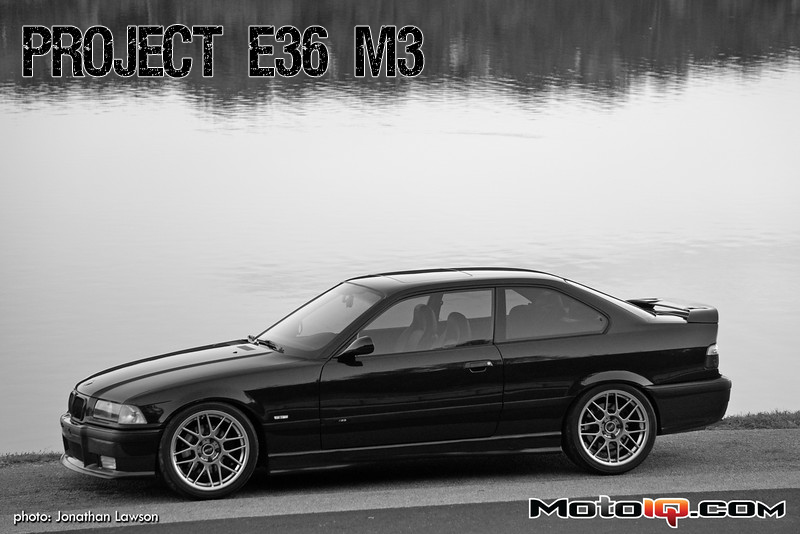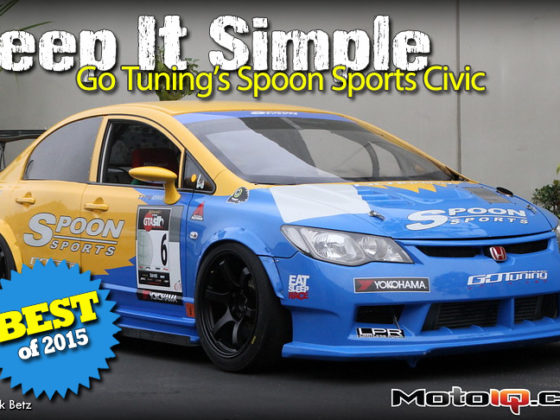
Project E36 M3: Part 5 – Suspension V1.1 – Sway Bars, Control Arms, and Fender Rolling
by Jonathan Lawson
Coming off an unplanned hiatus, we’re ready to get back into full swing with Project E36 M3. In part 4 we covered our new ARC-8 wheels and Michelin Pilot Sport A/S 3 tires with a sneak peak of the finishing touches on V1.0 of our suspension, and that brings us to the present…
Even with the well-balanced spring rates and damper adjustability of the HVT 6100s, there’s room for a bit of fine tuning in the body roll department, and the front MacPherson struts will keep you much happier if forced to stay in the good part of the camber curve under lateral load. Some beefy sway bars combined with good coil spring rates are the answer. Yes, they’re technically anti-roll or anti-sway bars, but for the sake of habit, they’ll be referred to simply as sway bars throughout the Project E36 M3 articles.

Removal of the front sway bar is fairly easy with just 2 nuts to remove from each mounting bracket and a nut on each end link—as pictured above. Regular wrenches will fit between the ball joint and bar, but a thin wrench will decrease the amount of potential damage to the rubber cover.
Sway bar choices for the E36 M3 are plentiful, and I’ve gone through a variety on past cars. The first bars I had were RD Sport on my original ’99, and they were nice combined with the H&R Sport Springs, but the H&R sway bars on my second M3 offered an extra millimeter of girth (size counts!), and they had a very cool teflon lining on the inside of the bushings that meant there was no squeaking for the lifetime of the bushings. I was very happy with the Hotchkis bars I ran on the old supercharged über wagon, though, so I decided to go that route again with Project E36 M3.
The Hotchkis sway bars are tubular, so they’re lighter weight than solid bars, and the construction and finish are both top-notch, so there are no worries about corrosion down the road. They come with some very cool hardware, too, from grease fittings on the heavy duty bushing mounts to bolt-in reinforcement kits.

Aside from the obvious old versus new look, there’s no denying which is which. At 23 mm, the E36 M3’s stock front bar pales in comparison to the Hotchkis 33.4 mm tubular bar. The OE bar almost looks embarrassed to be laying next to the glossy behemoth.

The two adjustment holes allow for either a 300% or 380% increase in stiffness over the stock bar. You could always split the difference, so to speak, and have one end link attached to each for a bit more fine tuning, but most E36 owners will probably be happiest with the bar at full stiff to keep camber loss under control.

Especially with age and any hard use, it’s a good idea to check all mounting points periodically, but particularly when performing any modifications. This car has been checking out pretty well, structurally, so we’ve had no worries up to this point.



